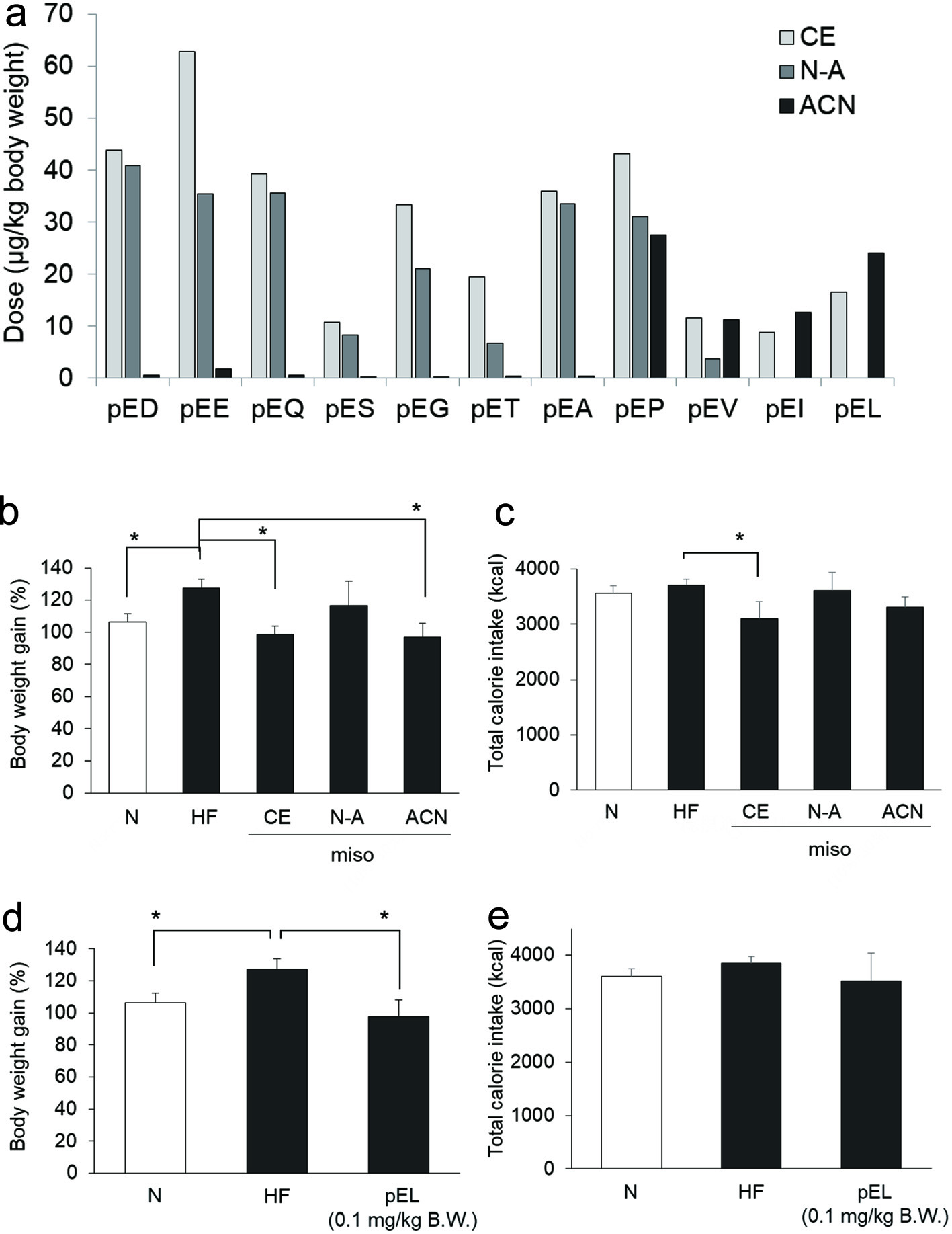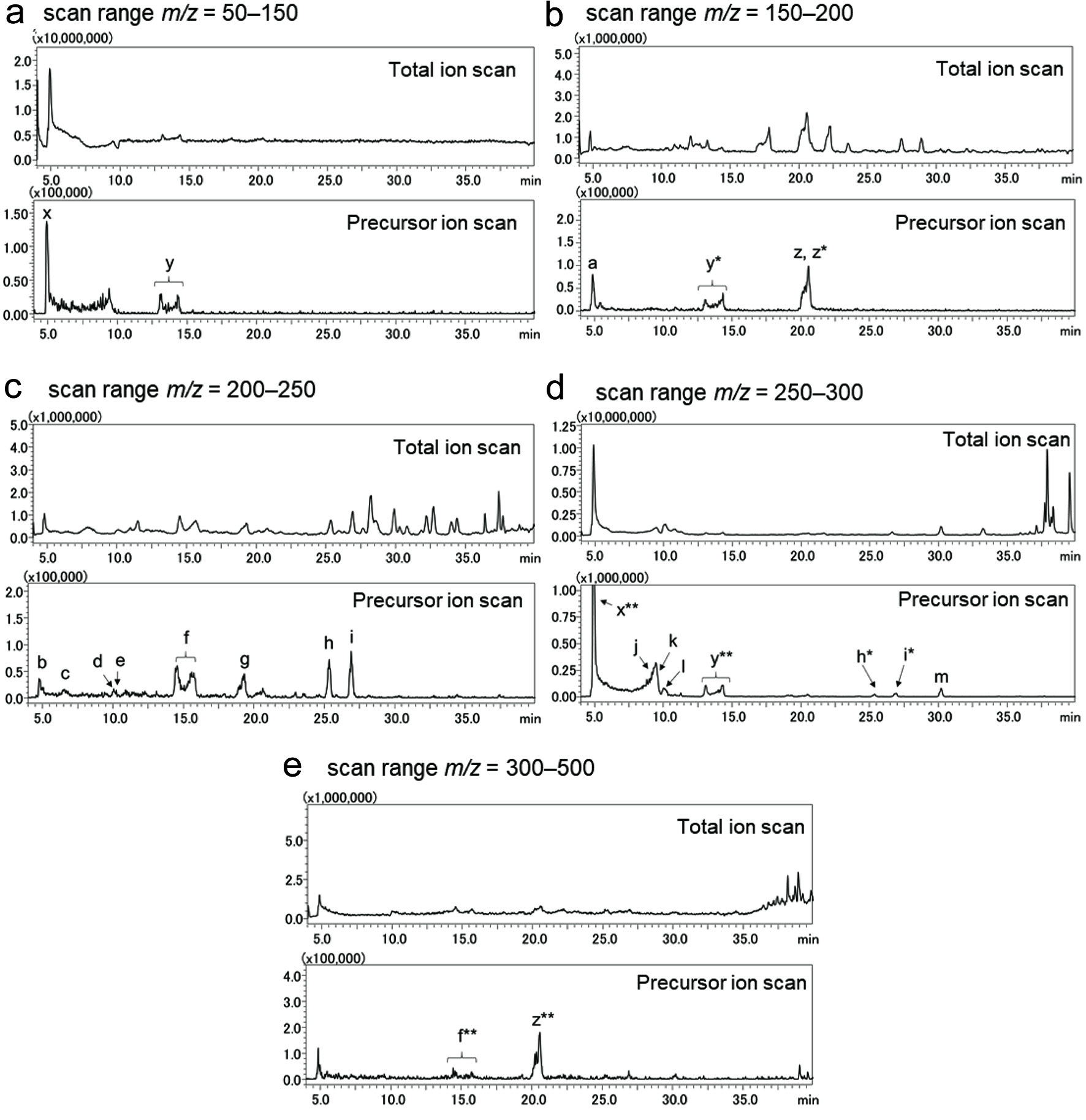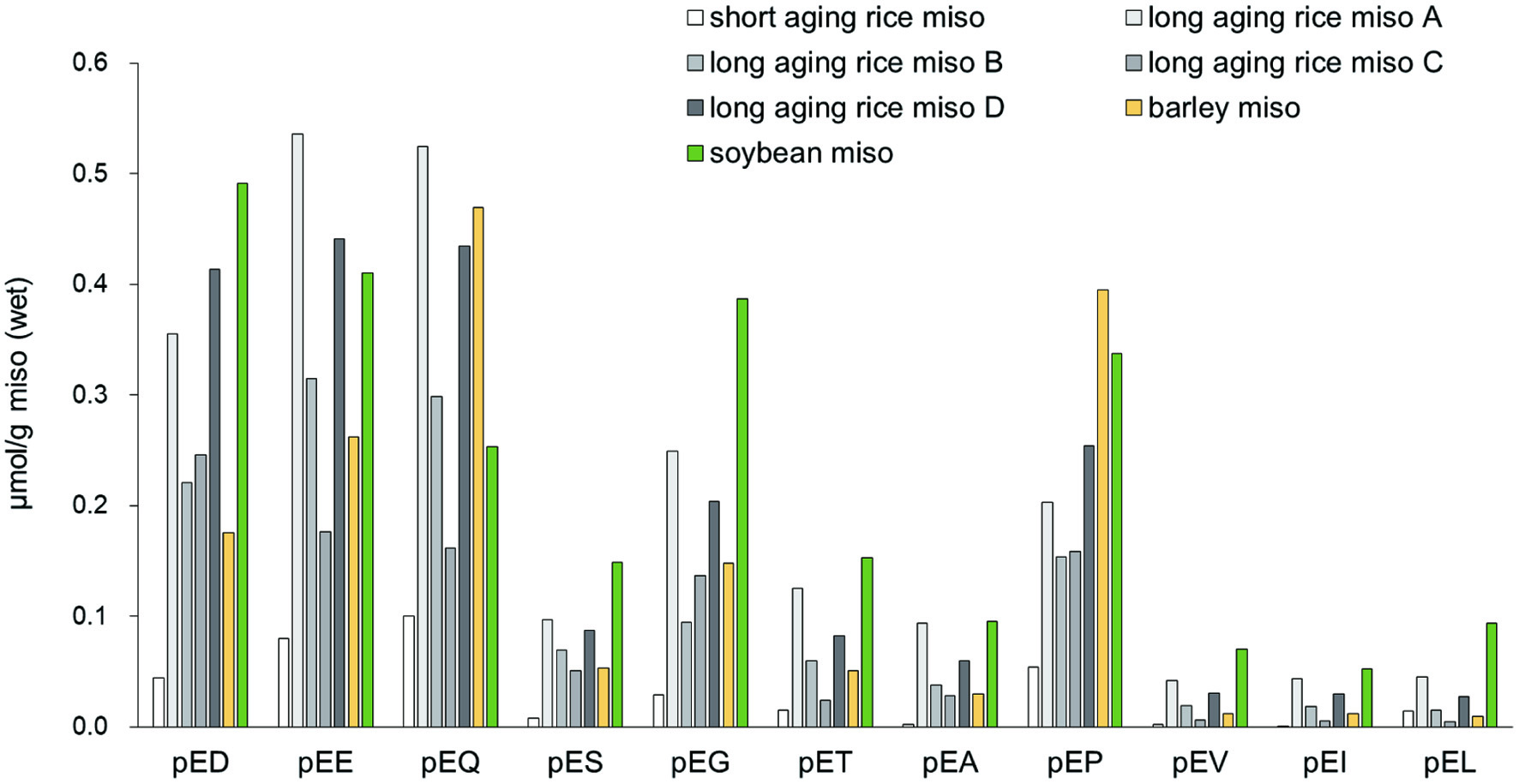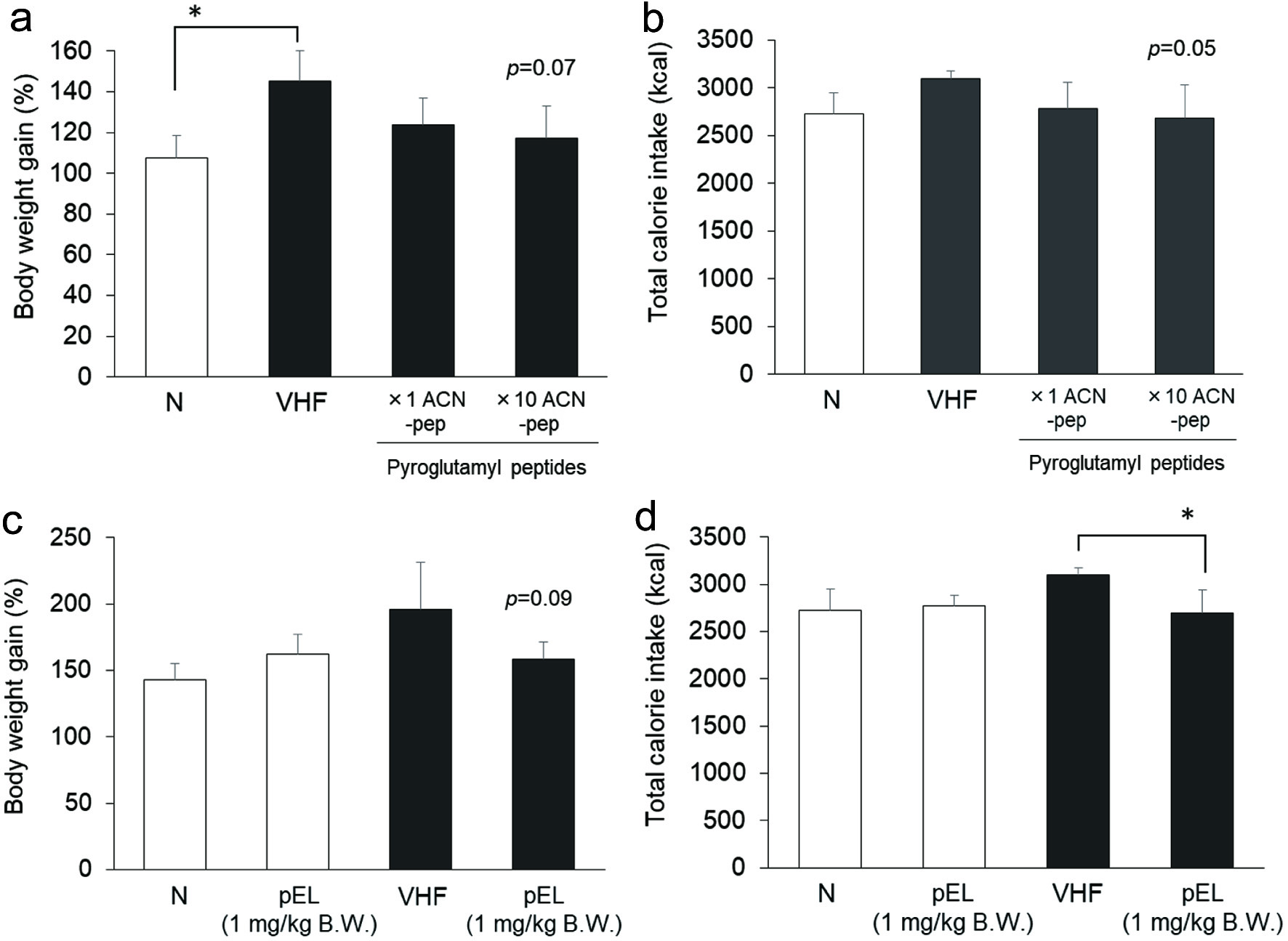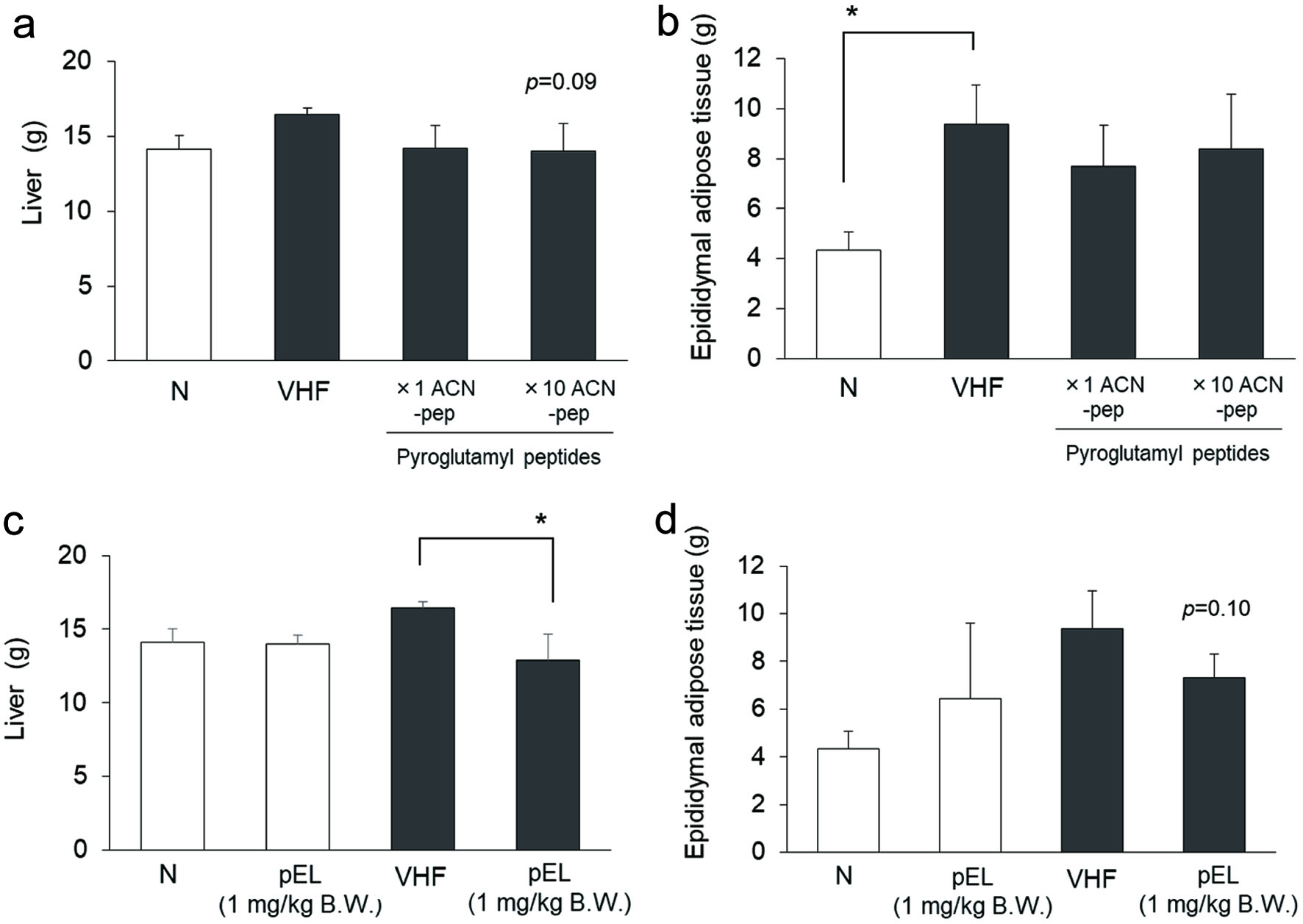| a | pyroGlu-Gly | 187.1 | 28 (pyroGlua), 30 (Glya), 41, 56 (pyroGlua), 76 (y1), 84 (pyroGlua) |
| b | pyroGlu-Ser | 217.1 | 28, 41, 56 (pyroGlua), 60 (Sera),30 (Glya), 84 (pyroGlua), 88 (z1), 106 (y1) |
| c | pyroGlu-Thr | 231.2 | 41, 56 (pyroGlua), 74 (Thra), 84 (pyroGlua), 102 (z1), 120 (y1) |
| d | pyroGlu-Asp | 245.3 | 70 (Aspa) |
| e | pyroGlu-Ala | 201.2 | 41 (pyroGlua), 44 (Alaa), 56, 84 (pyroGlua), 90 (y1) |
| f | pyroGlu-Pro | 227.2 | 41, 56 (pyroGlua), 70 (Proa), 84 (pyroGlua), 116 (y1), 181 (a2) |
| g | pyroGlu-Val | 229.2 | 41, 56 (pyroGlua), 72 (Vala), 84 (pyroGlua), 118 (y1) |
| h | pyroGlu-Ile | 243.2 | 28, 41, 56, 84 (pyroGlua), 86 (Ilea), 132 (y1) |
| i | pyroGlu-Leu | 243.2 | 28, 41, 56, 84 (pyroGlua), 86 (Leua), 132 (y1) |
| j | pyroGlu-Glu | 259.2 | 41, 84 (pyroGlua), 130 (z1) |
| k | pyroGlu-Gln | 258.2 | 84 (pyroGlua), 129 (Glna), 130 (z1) |
| l | pyroGlu-Gly-Ser | 274.2 | 41, 84 (pyroGlua), 256 (b3) |
| m | pyroGlu-Phe | 277.2 | 41, 56, 84 (pyroGlua), 120 (Phea), 166 (y1) |
| x | pyroglutamic acid | 130.1 | 28, 41, 56, 84 (pyroGlua) |
| y | pyroglutamic acid methyl ester | 144.1 | 28, 41, 56, 84 (pyroGlua) |
| y* | pyroglutamic acid methyl ester+CH3CN | 185.1 | 28, 41, 56, 84 (pyroGlua), 144 (peak y) |
| z | pyroglutamic acid ethyl ester | 158.1 | 28, 41, 56, 84 (pyroGlua) |
| z* | pyroglutamic acid ethyl ester+CH3CN | 199.1 | 28, 41, 56, 84 (pyroGlua), 158 (peak z) |
| x** | Two pyroglutamic acid | 259.2 | 41, 56, 84 (pyroGlua), 130 (peak x) |
| y** | Two pyroglutamic acid methyl ester | 287.3 | 41, 56, 84 (pyroGlua), 144 (peak y) |
| h* | pyroGlu-Ile+CH3CN | 284.2 | 41, 56, 84 (pyroGlua), 132 (Ile y1), 243 (peak h) |
| i* | pyroGlu-Leu+CH3CN | 284.2 | 41, 56, 84 (pyroGlua), 132 (Leu y1), 243 (peak i) |
| f** | Two pyroGlu-Pro | 453.3 | 70 (Proa), 84 (pyroGlua), 116 (Pro y1), 227 (peak f) |
| z** | Two pyroglutamic acid ethyl ester | 315.2 | 84 (pyroGlua), 130 (peak x), 158 (peak z) |
